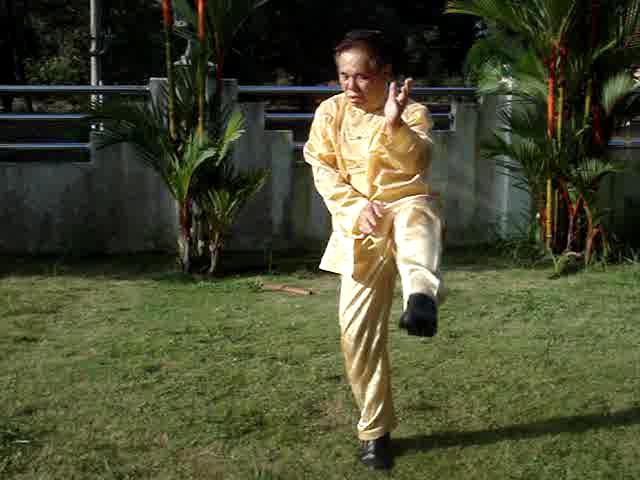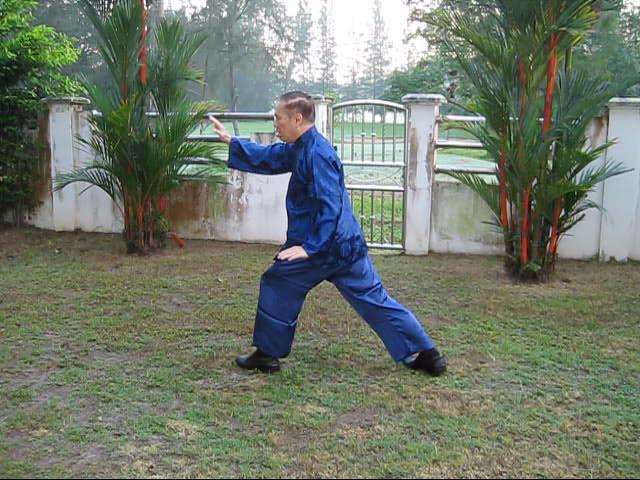WHY WAS NG MUI OR ZHANG SAN FENG BETTER THAN MASTERS EVEN IN THEIR SPECIALIZED ARTS?

Ng Mui's specialty was the Flower Set
Question 5
You mentioned on your website that you believed past masters like the Venerable Ng Mui and Zhang San Feng were all-rounders, and how their general level in terms of arm sensitivity or Iron Arm was of a higher level than masters who were particularly known for those arts (like Yim Wing Choon).
My questions are:
- How did the Venerable Ng Mui and Zhang San Feng achieve this?
- Was it from practicing many force training methods as opposed to only one or two methods?
- Is it unfavorable to practice only one or two methods as opposed to many over one's Kungfu career?
Sham
Answer
Hoong Hei Khoon was famous for his powerful punch. He developed his tremendous power using the triple-stretch method. Yim Wing Choon was noted for her internal force. She developed her internal force by practicing Siu Lin Tou. Thiet Kiew Sam was well known for his powerful arms. He developed his powerful arms by practicing the Iron Wire Set.
These masters famous for their particular arts were associated with their particular ways of training with their specialized sets – Hoong Hei Khoon with the Triple-Stretch Set, Yim Wing Choon with Siu Lin Tou, and Thiet Kiew Sam with Iron Wire Set.
On the other hand, kungfu geniuses like the Venerable Ng Mui and Zhang San Feng were not specially associated with any particular arts. They were all-rounders. In other words, when we think of Hoong Hei Khoon, we think of his powerful punch. When we think of Yim Wing Choon, we think of Siu Lin Tou. When we think of Thiet Kiew Sam, we think of his powerful arms.
But when we think of the Venerable Ng Mui or Zhang San Feng, we do not think of any particular art to be associated with them, though Ng Mui’s specialty was the Flower Set, and Zhang San Feng’s specialty was Wudang Shaolin Kungfu, which is now better known as Wudang Taijiquan. This is because they were good at everything that no single art stood out for them.
Even in the arts the other masters were famous for, Ng Mui and Zhang San Feng were still better than them. Ng Mui’s and Zhang San Feng’s punch, for example, was more powerful than Hoong Hei Khoon’s punch, and Ng Mui’s and Zhang San Feng’s arms were more powerful than Thiet Kiew Sam’s arms. Ng Mui and Zhang San Feng did not practice Siu Lin Tou, which was invented later by Yim Wing Choon. Yet I believe that Ng Mui’s performance and Zhang San Feng’s performance of Siu Lin Tou, if they ever performed it, would be better than Yim Wing Choon’s performance.
It is inspiring to note that such a situation also occurs in our school, not even amongst our masters but just amongst our students. I do not mean to be presumptuous, but I honestly believe that those students who attended our Baguazhang course as a supplementary art for just a few days are better at Baguazhang than students elsewhere who specially practice Baguazhang for many years. The same situation applies for other supplementary arts like Tantui, Eagle Claw, Praying Mantis, Iron Wire, Wuzuquan, Xingyiquan, Wing Choon and Choy-Li-Fatt.
We have more than enough material to justify our claim. How many students elsewhere who have practiced the relevant arts for many years have the type of internal force related to their arts, and can apply their arts for combat? How many students elsewhere have the skills specially associated with their arts, like getting to the back of opponents in Baguazhang, or being able to respond correctly even when blink-folded in Wing Choon Kungfu? How many students elsewhere have a sound philosophical understanding of their art? Most, if not all, our students who attended these supplementary courses have these abilities.
How were Ng Mui and Zhang San Feng better than the other masters in their latter’s specialties? How are our students better than students elsewhere in their arts? The answer is spread and depth. Ng Mui and Zhang San Feng had spread and depth. Our students have spread and depth, whereas students elsewhere spend their time on only the external form of their art.
Yes, one of the reason why Ng Mui and Zhang San Feng achieved this superiority in spread and depth was practicing many force-training methods as opposed to only one or two methods. I believe that Ng Mui and Zhang San Feng, being kungfu geniuses, would have practiced all the force-training methods in Shaolin and even elsewhere, such as triple-stretch, the force-approach, the flow-approach, One-Finger Shooting Zen, Eighteen-Lohan Art and Sinew Metamorphosis.
More significantly, being a Buddhist nun and a Taoist priest respectively, Ng Mui and Zhang San Feng would have practiced mediation deeply. I recall the advice of my sifu, Sifu Ho Fatt Nam, that if one wishes to soar the heights and depths of kungfu, he should practice chi kung; if he wishes to soar the heights and depths of chi kung, he should practice meditaion.
For most other people it is unfavorable to practice many methods at the same time because the different methods will cancel the effect of one another. But for us in Shaolin Wahnam and for kungfu geniuses, it is favorable to practice many methods at the same time because these different methods will enhance the effect of one another. This is because of the magic of chi flow.

Zhang San Feng's specialty was Wudang Shaolin Kungfu, now better known as Wudang Taijiquan
The questions and answers are reproduced from the thread Secrets of Building Internal Force in the Shaolin Wahnam Discussion Forum.
LINKS
